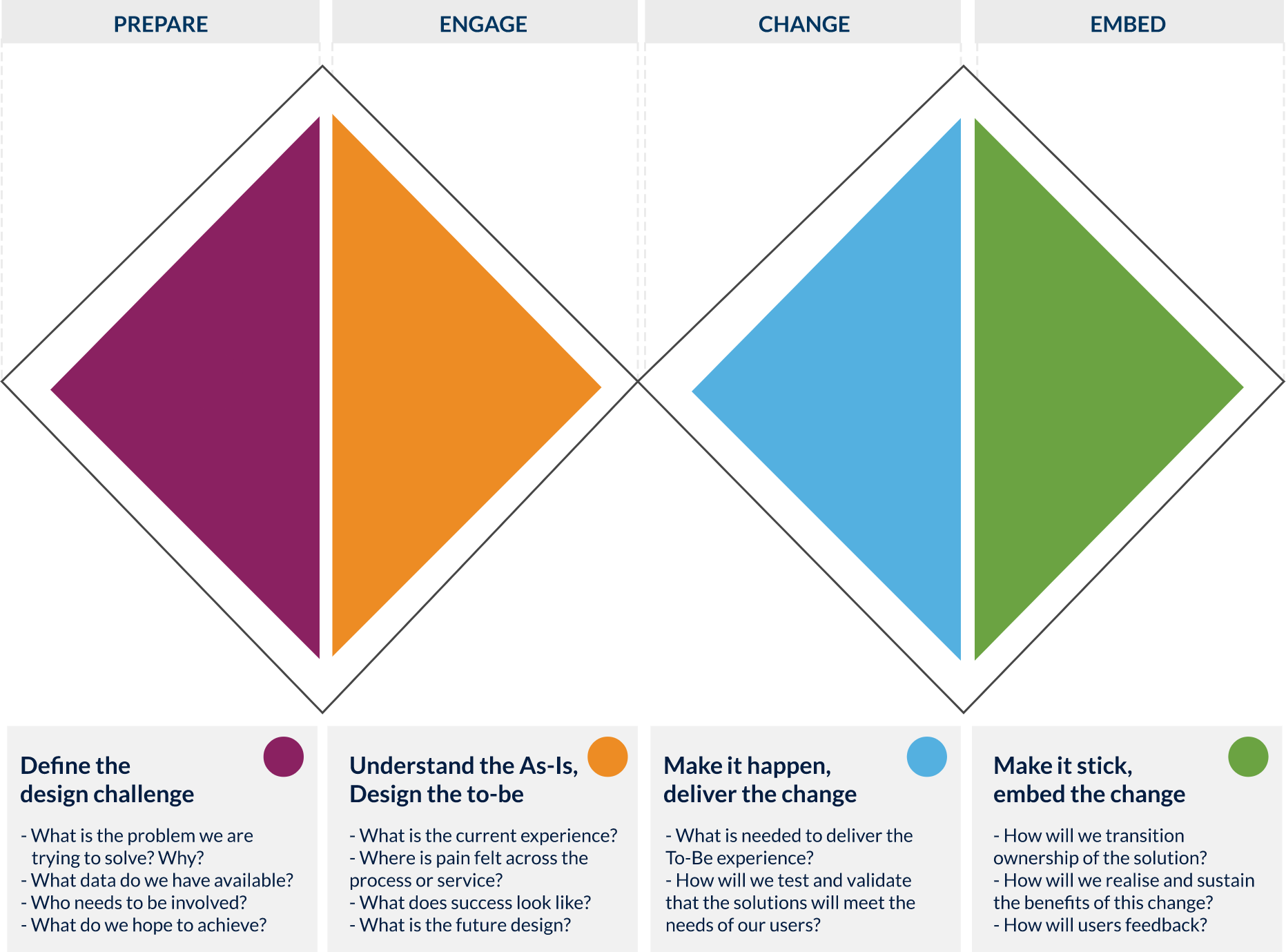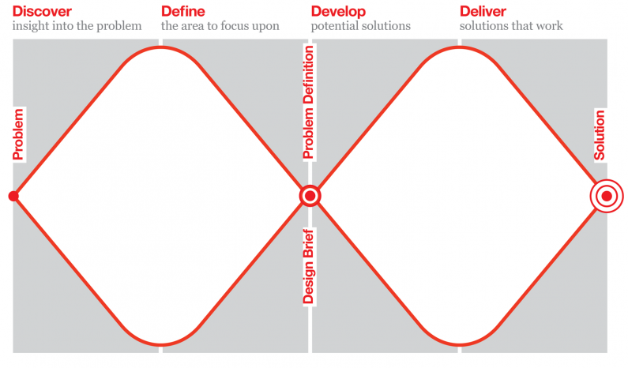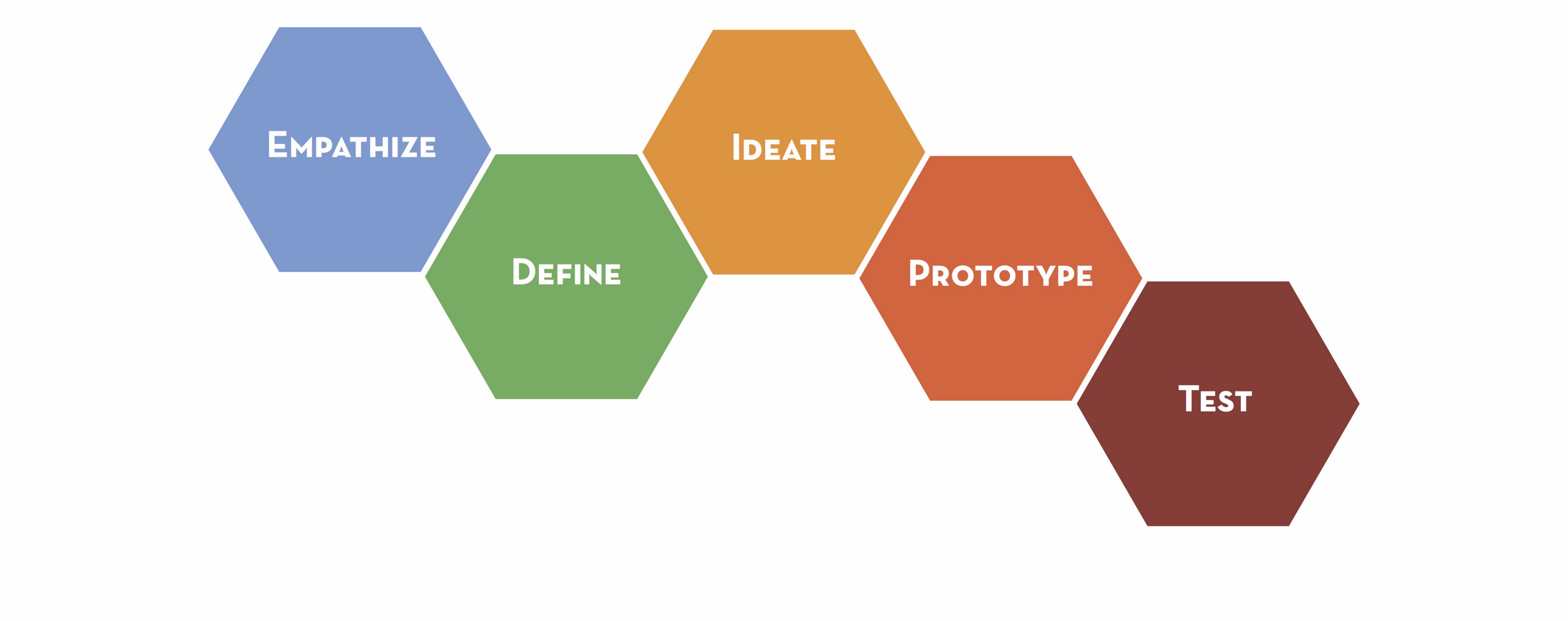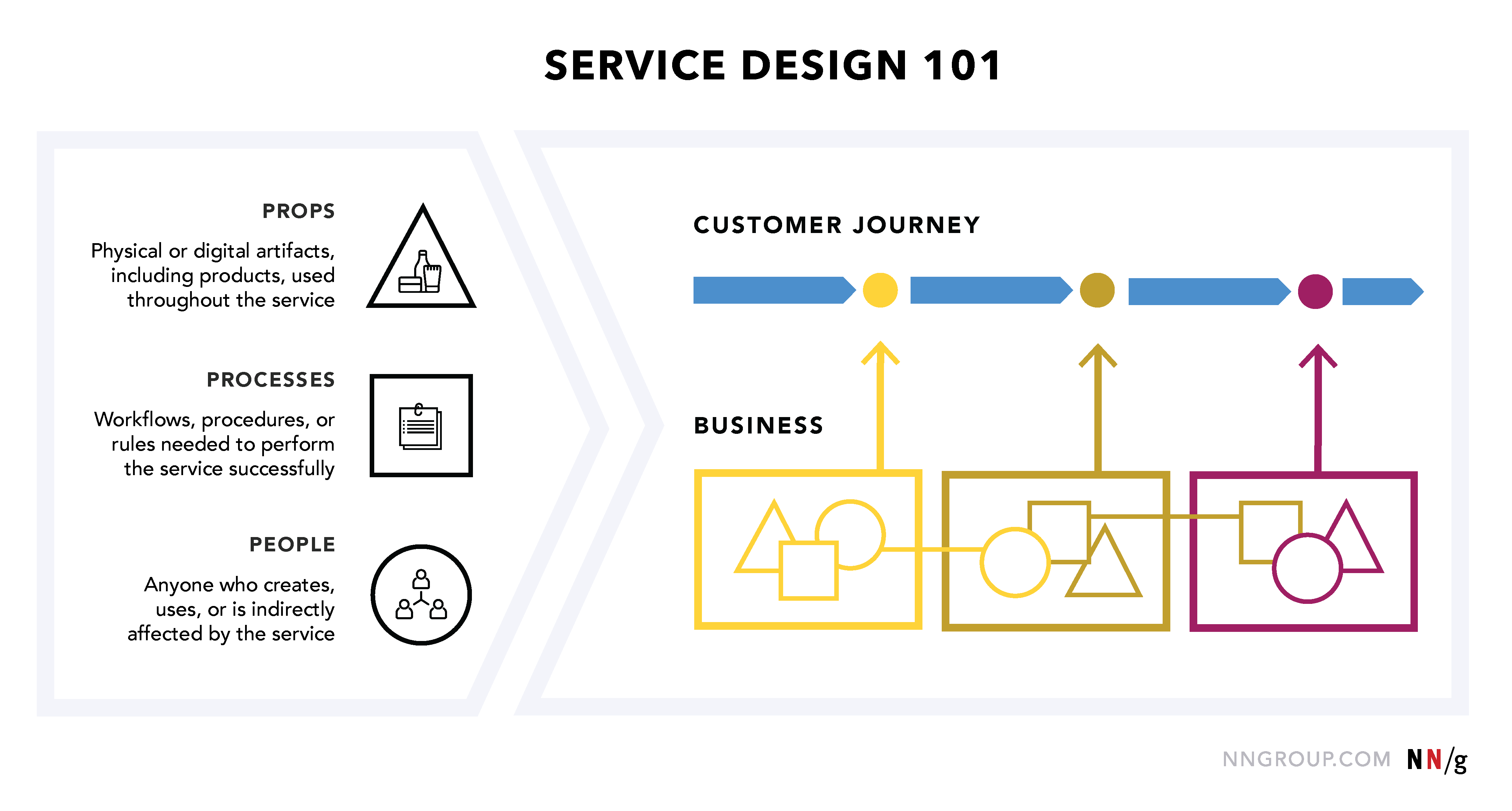
Business & Service Design
An introduction to the Transformation Team Design Process
An introduction to the Design process
Business & Service Design helps us to find solutions to achieving digital capabilities, meeting users' expectations, and delivering a consistent quality of service across different channels. This is an iterative and solution-based approach to solving problems. It provides a framework in which we can better understand and design for our users.
The Transformation Team Design Process
The Transformation Team has worked closely will colleagues in People & OD to establish the University of Glasgow Change Framework. This simple framework enables us to break our big areas of change into four manageable phases, ensuring we move forward, and turn opportunities into delivery. We use this framework to help us design change within a complex institution.

We will continue to update our Design Methods with useful tools and guides that can be used during each stage of the Design Process.
External examples of this methodology
Design Council Double Diamond and Stanford d.school Design Process
Double Diamond
The Design Council’s Double Diamond is a clear and visual description of the design process that we have adopted and adapted for use within the University. The two diamonds represent the process of exploring issues more deeply or widely (divergent thinking) or defining and taking focused action (convergent thinking).

The ‘Double Diamond’ Design Process Model (Design Council UK, 2005)
Stanford d.school
The Stanford d.school shows five modes that have been identified as components of designt thinking.

Empathise:
- Observe how users interact with their environment
- Engage with users directly
- Immerse yourself in your users' experience
Define:
- Develop an understanding of the type of person you are designing for
- Reframe your challenge based on new insights gained through your empathy work
Ideate:
- 'Go wide' during idea generation to uncover unexpected areas of exploration
- Avoid evaluating during idea generation to step beyond obvious solutions and drive innovation
Prototype:
- Create prototypes to test and refine solutions
- Develop multiple concepts to test in parallel
- Inspire others by showcasing the designs
Test:
- Gather feedback, refine solutions and continue to learn about your users
- Place prototypes in the appropriate context of your user's journey
- Build empathy through observation and engagement
Design thinking is more than just a process, it offers a collection of hands-on methods to help you apply a new mindset to solving problems.
What is service design?
Service design can be used to improve an existing service to make it work better for its users, or it can be used to create a new service.
“Service design helps organisations see their services from a customer perspective. It is an approach to designing services that balances the needs of the customer with the needs of the business, aiming to create seamless and quality service experiences. Service design is rooted in design thinking, and brings a creative, human-centred process to service improvement and designing new services.” – crowdsourced by Megan Erin Miller
Key Components of Service Design
Three main components of service design are:
- Props: the physical or digital artefacts that are needed to deliver a successful service
- People: anyone who uses the service, as well as those who may be indirectly affected by it
- Processes: workflows or activities performed throughout the service

What is the user experience?
Enhancing the user experience is an important part of human-centred design. User experience is a measure of a user’s interaction with an organisation, it’s services and products.
You cannot directly design the experience, as an experience is the result of a user interacting with a product or service. However, you can identify what makes a good experience versus a bad one by researching, designing and testing.
User experience, often referred to as UX, is most often associated with digital design. Our colleagues within Information Services and the Webteam have some helpful information on this element of UX.
UX Framework (Information Services): If you work on a website, app, online service or business system for UofG students or staff, find out more about the UX Framework and how it will help you give them the best possible experience.
UX to improve your website (Webteam): The University Webteam can assist you with conducting user-testing on any t4 website and recommend how to organise your content.
The Transformation Team approaches UX across the whole user experience, this includes digital but we focus on the holistic user experience across the multichannel or sometimes referred to ‘omnichannel’ experience. We adapt this depending on the projects we are working on and what our users tell us.

